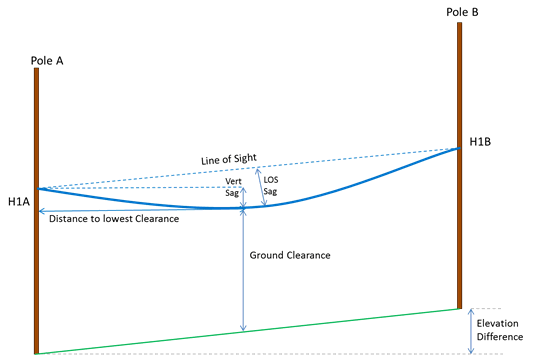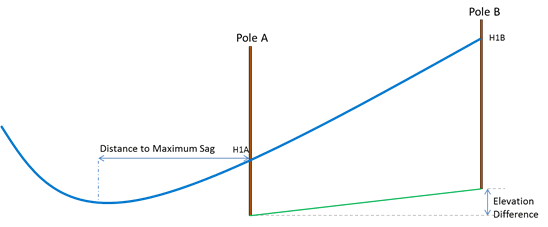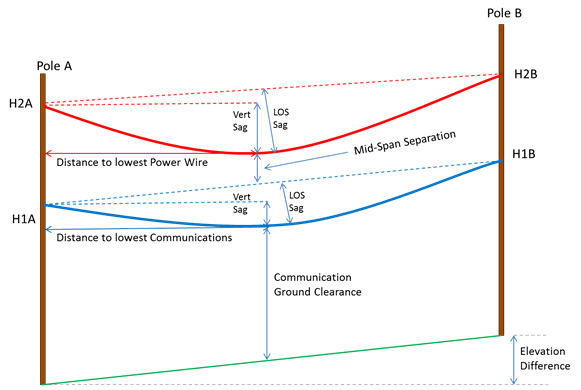Understanding Sags and Clearances
National Codes will specify the range of load conditions that poles and their attachments will be exposed. Under any of these conditions, there are other conditions that the attachments must also meet, such as:
- Separation between different attachment types on the pole,
- Separation between different attachment types anywhere within the span(s) to the next pole(s),
- Clearance to ground from the attachment.

Quick Pole will test the range of conditions required for each attachment to determine its worst sag condition. In the simple situation where the ground is perfectly flat (pole elevations equal) and the attachment heights on the adjacent two poles are the same, the attachment will always sag the most exactly half-way in the span. The amount of Vertical Sag is also the same as the Line of Sight (LOS) sag. When either the pole elevations or attachment heights are not the same, the maximum sag point will move closer to the pole with the lowest absolute attachment height (attachment height + pole elevation). Quick Pole will calculate the distance to this maximum vertical sag point and its value for use in clearance and mid-span separation purposes. At this point of maximum vertical sag, the clearance to ground is calculated, assuming a constant slope between the two poles in the span.
In some cases the maximum vertical sag point will not occur in the span because of differences in the absolute attachment heights on the adjacent poles and the tensions involved.

In these cases, Quick Pole will compute the theoretical distance to the maximum vertical sag point. It will indicate this as a negative value for this maximum vertical sag point. In this situation, ground clearance calculations will always be the least at the lower supporting pole's attachment point.
The situation becomes even more interesting when there are multiple Power Wires and Communication wires in a span. National Codes have requirements for separations between these two types of attachments. Some of these requirements change with span length.

Quick Pole will look for the lowest Power Wire and the Highest Communication Wire for mid-span separation evaluation. Since it is possible that the slopes of the absolute attachments' height difference between the adjacent poles can be different for each type of wire, their point of maximum vertical sag can be different, which needs to be considered properly in the calculations. The results of these calculations can be found in the Mid-Span Clearances and Separations Report.
For Ground Clearance purposes, the lowest wire of any type is evaluated at its maximum vertical sag point; while considering that the slope of the ground is constant between the adjacent poles.
In order to consider a more complicated ground elevation profile, simply define clearance points at various locations in the span and enter their elevation, as shown below.
